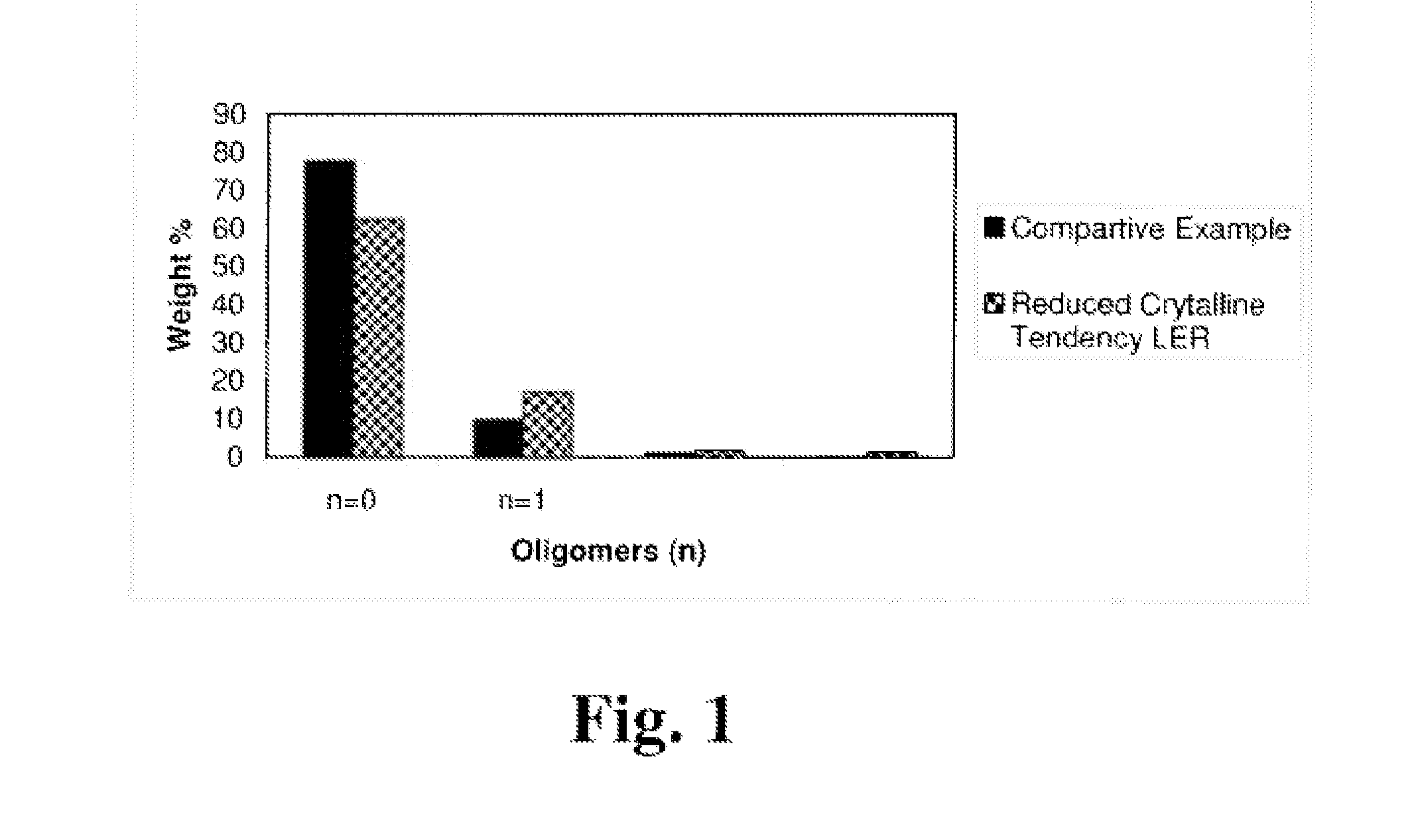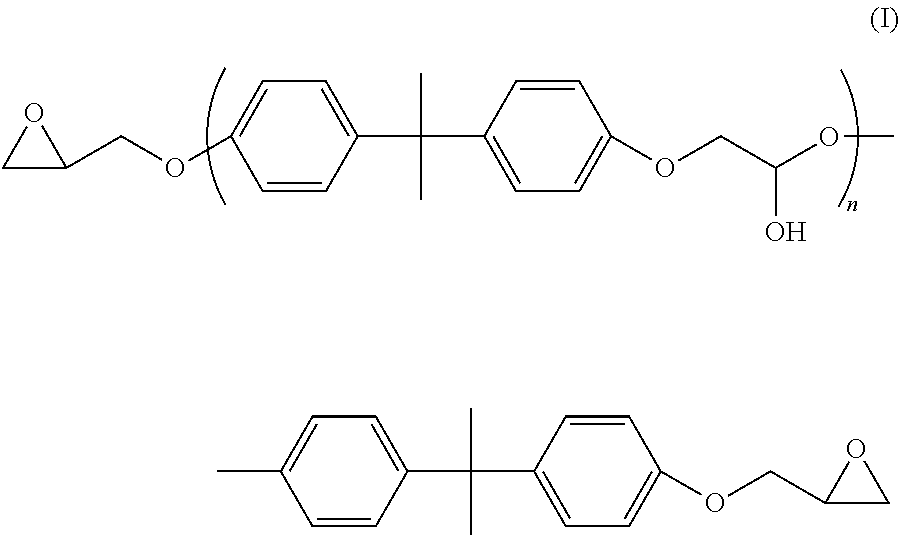Liquid epoxy resin formulations
a technology of epoxy resin and resin blend, which is applied in the field of liquid epoxy resin and liquid epoxy resin blend, can solve the problems of epoxy resin samples already on store shelves, prone to crystallization at lower temperatures, and not always possible to store resins in warmer or temperature controlled environments, etc., and achieves the effects of reducing the crystallization tendency of ler and ler blend, and reducing the crystallization tendency
- Summary
- Abstract
- Description
- Claims
- Application Information
AI Technical Summary
Benefits of technology
Problems solved by technology
Method used
Image
Examples
examples
[0065]The following Examples are set forth to illustrate various embodiments of the present invention; and are not intended to limit the scope of the present invention. Unless otherwise stated all parts and percentages in the Examples are by weight.
[0066]Various terms, abbreviations and designations for the raw materials used in the following Examples are explained as follows:
[0067]“LER-1” is a liquid diglycidyl ether of bisphenol A epoxy resin having an EEW of about 185, and commercially available from The Dow Chemical Company. LER-1 is used herein as a comparative example.
[0068]“LER-2” is a liquid diglycidyl ether of bisphenol A epoxy resin having an EEW of about 180, and commercially available from The Dow Chemical Company. LER-2 is used herein as a comparative example.
[0069]“LER-3” is a liquid diglycidyl ether of bisphenol A epoxy resin having an EEW of about 187, and commercially available from The Dow Chemical Company. LER-3 is used herein as a comparative example.
[0070]“LER-4...
examples 15-19
and Comparative LER-3 Blend
[0115]About 20 g of liquid epoxy resin blend (Comparative LER-3 mixed with aliphatic diglycidyl ether A-1 or 1-4-butane diglycidyl ether and reduced crystallization LER-B mixed with aliphatic diglycidyl ether A-1 or 1-4-butane diglycidyl ether) were added into a test tube, the test tube stoppered, and then placed in an oven at 60° C.±2° C. for 16 hours. Then, the test tube was cooled to room temperature (23° C.±5° C.). Then, 20 g of calcium carbonate and 2 g of ethanol were added to the test tube and the resultant sample in the test tube was thoroughly mixed with a glass rod for 2 minutes. The test tube was then re-stoppered and placed in a vertical position in a refrigerator at 10° C.±2° C.
[0116]The results of Examples 15 to 19 and Comparative Example LER-3 are shown in Table VI.
TABLE VIComparative ExampleLER-3 Example 15 Example 16 Example 17Example 18Example 19LER-386LER-B (1) (wt.%)90LER-B (2) (wt.%)83LER-B (3) (wt.%)83LER-B (4) (wt.%)80LER-B (5) (wt.%...
PUM
| Property | Measurement | Unit |
|---|---|---|
| viscosity | aaaaa | aaaaa |
| temperature | aaaaa | aaaaa |
| temperature | aaaaa | aaaaa |
Abstract
Description
Claims
Application Information
 Login to View More
Login to View More - R&D
- Intellectual Property
- Life Sciences
- Materials
- Tech Scout
- Unparalleled Data Quality
- Higher Quality Content
- 60% Fewer Hallucinations
Browse by: Latest US Patents, China's latest patents, Technical Efficacy Thesaurus, Application Domain, Technology Topic, Popular Technical Reports.
© 2025 PatSnap. All rights reserved.Legal|Privacy policy|Modern Slavery Act Transparency Statement|Sitemap|About US| Contact US: help@patsnap.com



